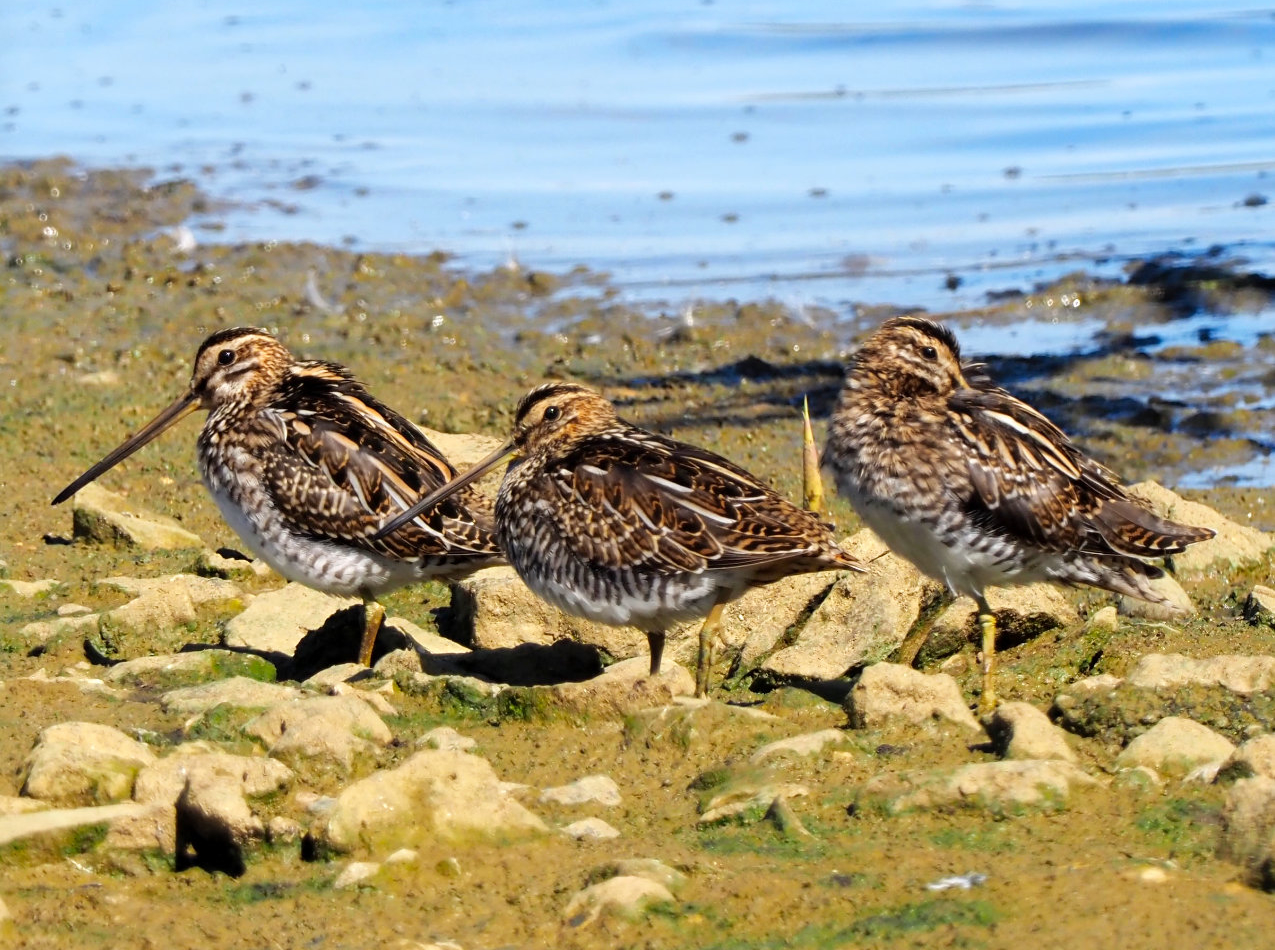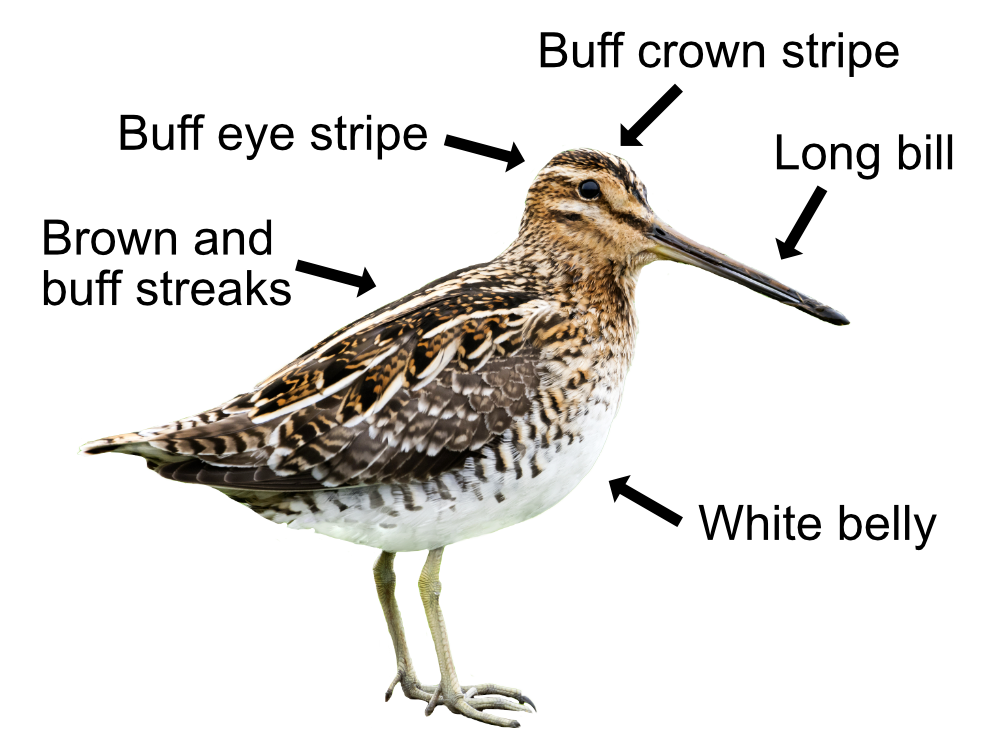
The Common Snipe is a superb demonstration of good camouflage. They are incredibly tricky to see amongst grass and reeds, blending in perfectly. A shy bird that conceals itself in ground vegetation and flies off only when you get too close. When flushed, it utters a sharp note that sounds like "skatch" and flies in a series of aerial zig-zags to confuse any chasing predators.
The stripy Snipe is brown with buff streaks. It has a buff stripe through the centre of its crown and one over the eye. Its legs are short, its belly is white and its bill is very long for its size. When flying, there is a white trailing edge to their pointed wings.
Snipe do not form large flocks but feed together in small groups called 'wisps'. They use their sensitive bill to probe for worms and other insects hidden in soft mud. The bill's end is flexible, enabling it to locate and grasp prey.

The Snipe breeds in wet places like rushy fields and northern moorlands. Nesting begins in April but they can breed as late as August. The male builds a well-hidden nest on the ground and romantically performs a 'winnowing' display on a moonlit night by flying high in circles and then taking shallow dives to produce a 'drumming' sound by vibrating his tail feathers to attract a mate. The female incubates the 4 eggs by herself until they hatch 18 days later. The youngsters quickly leave the nest and the brood is split between mum and dad with dad looking after the older chicks. The youngsters are fed by both parents and can fly after 19 days but take 7 weeks to fully grow and become independent.
Overall, the Common Snipe is not threatened. However, numbers in parts of Europe and Britain are falling because of the draining of water meadows, ploughing of grasslands, and planting of forests on upland moors. It is now Amber Listed. Of the 70,000 pairs that breed here, a high proportion now breed on nature reserves. British Snipe generally overwinter in the overall area where they nested but move from the uplands to the lowlands. In autumn, more Snipe from Iceland, the Faroe's, and Scandinavia come to overwinter, arriving in September and leaving in March, swelling the numbers to over 1,000,000 pairs. The oldest ringed Snipe was 16.
Their Latin name is 'gallinago gallinago' where 'gallinago' is the Latin name for a Woodcock or Snipe from 'gallina' for 'hen' and '-ago' meaning 'resembling'. The Snipe's courting 'drumming' sound has been compared to the bleating of a sheep or goat; hence, in many languages, the Snipe is known by names such as 'flying goat', 'heaven's ram', 'heather-bleater' and 'sky goat'.